By Barbara Beltrami
I’ve recently started using za’atar a lot. A Middle Eastern blend of equal amounts of dried culinary herbs, thyme, cumin, coriander, sesame seeds and sumac with a perhaps a little salt or crushed hot red pepper added, za’atar gives an interesting and savory dimension to both ordinary and exotic dishes. Like so many ethnic combinations, it varies from cook to cook and region to region with other additions or substitutions such as fennel or marjoram, for instance.
Moreover, I’ve found that recipes in which it is used often call for additional amounts of one of its elements. Make your own blend or buy it at specialty grocers, then add it to salad dressings, spreads, dips, veggies, meat, poultry or fish, and a whole lot more. Its flavor is subtle; it doesn’t sock it to you, make your eyes water, clear your sinuses or send you sputtering and sprinting for a glass of water. It’s just a nice flavor kick.
Basic Za’atar
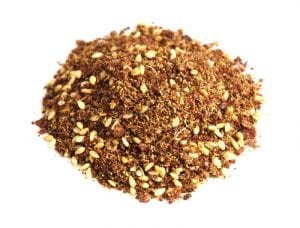 YIELD: Makes generous 1/4 cup.
YIELD: Makes generous 1/4 cup.
INGREDIENTS:
1 tablespoon crushed dried thyme leaves
1 tablespoon ground coriander
1 tablespoon ground cumin
1 tablespoon toasted sesame seeds
1 tablespoon sumac
Generous pinch coarse salt
Generous pinch crushed dried red pepper flakes
DIRECTIONS:
In a small bowl thoroughly combine ingredients. Store in air tight container or zip top bag.
Cucumber, Tomato and Feta Salad with Za’atar
YIELD: Makes 4 to 6 servings.
INGREDIENTS:
1/4 cup extra virgin olive oil
2 garlic cloves, bruised
1 tablespoon za’atar
Coarse salt and freshly ground black pepper to taste
2 tablespoons freshly squeezed lemon juice
1 small English hothouse cucumber, peeled and diced
1 cup grape or cherry tomatoes, halved
1 cup crumbled feta cheese
DIRECTIONS:
In a small skillet over medium high heat, warm oil; add garlic, reduce heat to low and cook until garlic releases its aroma and starts to turn golden, about 5 minutes. Add za’atar, stir and remove from heat. Discard garlic, let cool to lukewarm, add salt and pepper and lemon juice. In a salad bowl toss cucumber and tomatoes with warm dressing, then sprinkle feta on top. Serve with toasted pita bread and hummus.
Lemony Za’atar Chicken, Potatoes and Onions
YIELD: Makes 4 to 6 servings.
INGREDIENTS:
1/2 cup olive oil
1/4 cup freshly squeezed lemon juice
3 tablespoons za’atar
1 garlic bulb, cloves separated and peeled
1/2 cup dry white wine
Coarse salt and freshly ground black pepper to taste
1 broiler-fryer chicken, cut into 8 pieces
1 1/2 pounds baby potatoes, scrubbed and halved
1 large onion, peeled and cut into small wedges
DIRECTIONS:
In a small bowl, whisk together the oil, lemon juice, za’atar, garlic, wine, salt and pepper. Transfer to gallon zip top bag, add chicken, seal bag and turn it to be sure chicken is evenly coated. Refrigerate for two hours. Remove chicken from bag, but reserve bag of marinade; place chicken in bowl, cover with plastic wrap and refrigerate. In the bag of reserved liquid place the potatoes and onions; seal bag and tilt to coat them evenly; refrigerate for one hour. Preheat oven to 400 F, place chicken, garlic, potatoes and onions with the marinade in a shallow baking pan. Bake, basting occasionally, until chicken is cooked through and veggies are tender, about 40 to 50 minutes. Serve hot with a tossed salad.
Za’atar Red Snapper with Israeli Couscous
YIELD: Makes 4 servings.
INGREDIENTS:
1 cup Israeli couscous
Four 6-ounce red snapper fillets, skin on
1/4 cup olive oil
Coarse salt and freshly ground pepper to taste
3 tablespoons za’atar
DIRECTIONS:
Cook couscous according to package directions. Meanwhile coat the fish fillets on both sides with olive oil, season with salt and pepper and rub each side of the fillets evenly with the za’atar. Heat the remaining oil in a large nonstick skillet over medium-high heat; add the fish fillets, skin side down, and cook until skin is golden and crisp, about 5 minutes. Carefully turn fish over and cook until flesh is opaque and fish flakes easily. Divide couscous onto 4 plates and top with fish. Serve hot with sautéed greens.

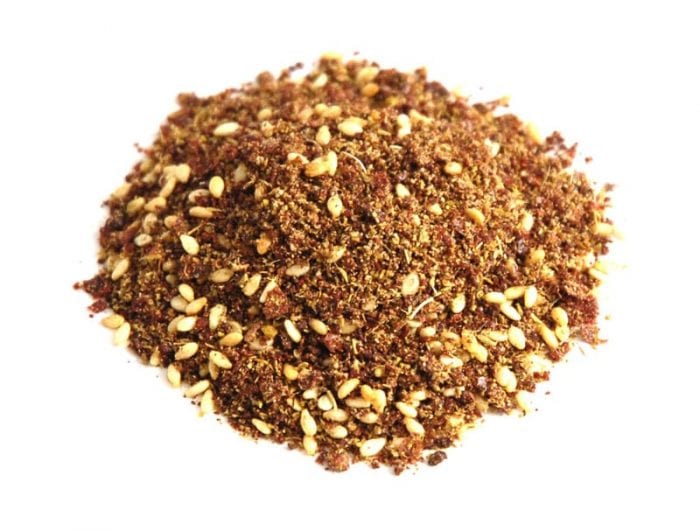

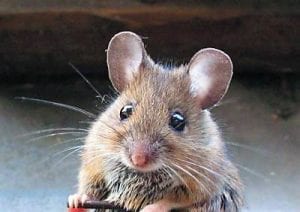
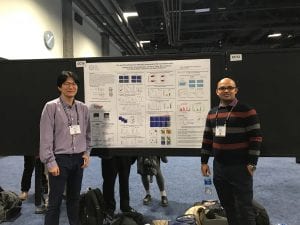





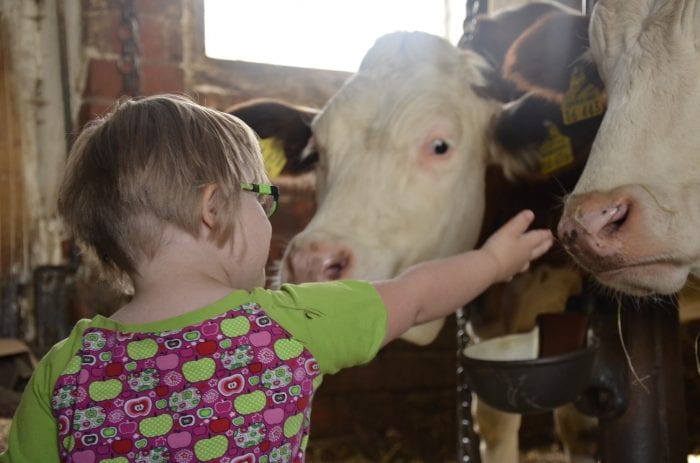





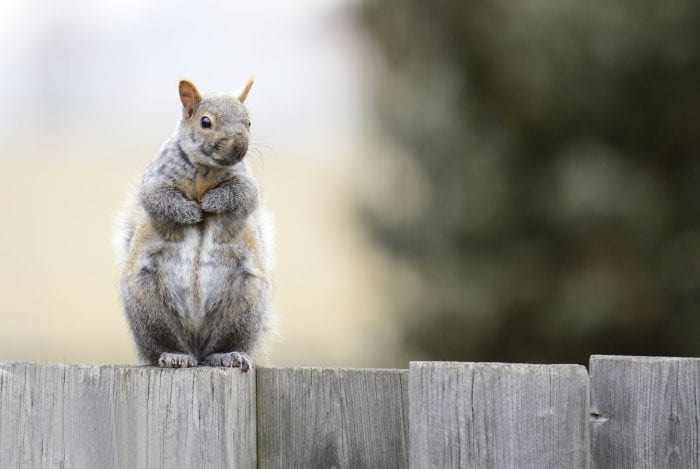
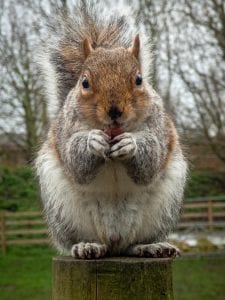 My interest in squirrels and their nests came about from a book I had looked at in the junior high school library; I think it was entitled “Animal Homes”— although this factoid I don’t remember quite so clearly! But what I do remember in the book was the account which explained that grey squirrels make two types of nests — those in tree cavities, often used in winter, and the one I was going to inspect consisting of a globe-shaped leafy ball, known as a “drey,” wedged amidst branches, also used in winter but more often during the warmer months. The account mentioned that most dreys consisted of a single chamber although occasionally they make two chambers — the equivalent of a foyer leading into the living room.
My interest in squirrels and their nests came about from a book I had looked at in the junior high school library; I think it was entitled “Animal Homes”— although this factoid I don’t remember quite so clearly! But what I do remember in the book was the account which explained that grey squirrels make two types of nests — those in tree cavities, often used in winter, and the one I was going to inspect consisting of a globe-shaped leafy ball, known as a “drey,” wedged amidst branches, also used in winter but more often during the warmer months. The account mentioned that most dreys consisted of a single chamber although occasionally they make two chambers — the equivalent of a foyer leading into the living room.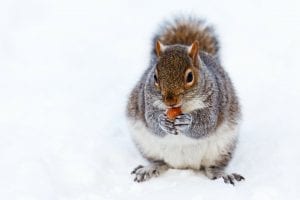 Many years ago I worked in a nature preserve and one day went to look at some white baneberry growing along a trail I knew was developing fruits (also known as doll’s eyes due to the resemblance of the fruits to the eyes once used in old fashioned porcelain dolls, white baneberry is in the buttercup family). As I neared the plants I noticed, at the base of a large chestnut oak on the other side of the trail, a small brownish object. Inspecting it I realized it was a freshly dead flying squirrel. I sadly wondered if the squirrel had misjudged the location of the tree or got carried by the wind and collided with the tree with such force that it caused its demise.
Many years ago I worked in a nature preserve and one day went to look at some white baneberry growing along a trail I knew was developing fruits (also known as doll’s eyes due to the resemblance of the fruits to the eyes once used in old fashioned porcelain dolls, white baneberry is in the buttercup family). As I neared the plants I noticed, at the base of a large chestnut oak on the other side of the trail, a small brownish object. Inspecting it I realized it was a freshly dead flying squirrel. I sadly wondered if the squirrel had misjudged the location of the tree or got carried by the wind and collided with the tree with such force that it caused its demise.




